Iran Regime Officials Advise Students To Study In North Korea

A top university professor in Iran has harshly criticized comments by a science ministry official regarding study opportunities for students in North Korea.

A top university professor in Iran has harshly criticized comments by a science ministry official regarding study opportunities for students in North Korea.
After meeting with the North Korean ambassador, the head of the Student Affairs Organization of the Ministry of Science said professors and students can take advantage of exchange programs with the isolated country.
Prof. Mehdi Zakerian said, “I have studied and lived in the United States and France, I have not been to North Korea, but I know there is not even the possibility of accessing the Internet in this country.” He was speaking to Khabaronline website in tehran.
“How is that the children of our officials study in the US and Europe, but advise other students to go North Korea to study?” he asked.
Many Iranian regime insiders have sent their sons and daughters to study and live in North America and Europe, while they continue to support the anti-West rhetoric and policies of the Islamic government. Some regime officials said in recent years that up to 4,000 family members of current or former officials live in the West.
Canada in October banned 10,000 members of Iran’s Revolutionary Guards from entering its territory and reports say that Ottawa is investigating to see if there are undesirable individuals currently living in the country.

Claims by Iranian officials that a female doctor who died with unusual injuries committed “suicide” has sparked suspicions of yet another death in custody.
The family of Dr. Aida Rostami were contacted by the local police the day after her disappearance, December 12, a source close to the family told Iran Wire Friday and that she had died in a car accident. The police said the body was at the morgue of Behesht-e Zahra Cemetery in the south of the capital Tehran.
The authorities insisted, when they handed over the body to the family, that they should bury her in their hometown of Gorgan in northeastern Iran. According to the source, the family first resisted the pressure but later accepted the request, as their daughter had previously expressed a desire to be buried in her hometown if she ever died.
The source also said medical examiners told the family, apparently in confidence, that she was not killed in a car accident, as the police had told the family, but that they were ordered not to reveal the true cause of death.
Sources close to the family have said when the they insisted to view the body, they saw various injuries and bruises, including on her genitals, and broken arms. The lids of one of the eyes of the young doctor were stitched together, apparently to conceal the removal of the eyeball.
Judiciary authorities are now offering a completely different account of the circumstances of the young doctor’s death and have arrested a young man who they claim is suspected of throwing Dr. Rostami to her death from a pedestrian overpass after a quarrel over their relationship.
State media on Sunday published a video of the unnamed man who claimed Rostami was his girlfriend and that she had thrown herself from a pedestrian bridge after he left her and that he returned to find her body on the ground.
Donya Farhadi, an architecture student, whose body was recently found ,was a protester
Authorities have explained the death of several young protesters in the past three months in similar ways, including the suspicious deaths of two teenagers in Tehran and Karaj in late September and early October. Authorities claimed Nika Shakarami and Sarina Esmailzadeh had both jumped to their deaths from the top of buildings.
The death of Aylar Haqqi (Haghi), a 23-year-old medical student, whose body was found in a construction site in Tabriz on November 15, was also explained in the same way, although her relatives claim she was shot with shotgun pellets before her injured body was thrown down from the top of a building on the site.
Families or sources close to the families of these young women have all said they were subjected to pressure and intimidation by security and intelligence forces who wanted them to validate their “scripted” accounts of their deaths.
On Friday another young woman’s body was found on the banks of Karoun River in a village near Ahvaz in southwest Iran by the locals. Authorities claim Donya Farhadi, a twenty-one-year-old student had fallen into the river from a bridge. Local sources have said on social media that the young woman was an active participant in the recent student protests.
Dr Rostami, 36, was last heard of on the evening of December 12 when she called her mother to say she was on her way to a wounded protester she was secretly treating and needed to buy more medical supplies. At that time she was in Ekbatan, a massive apartment complex in the west of Tehran, where she and her family also resided.
In the past three months Ekbatan has been one of the major hotspots of protests and frequent crackdowns by security forces who on some occasions have fired shotguns at windows indiscriminately to silence people chanting from inside their apartments every night.
An informed source told Iran International that Dr Rostami had been secretly treating protesters who feared arrest if they sought treatment for injuries and bullet wounds at hospitals, where agents usually wait to arrest protesters.
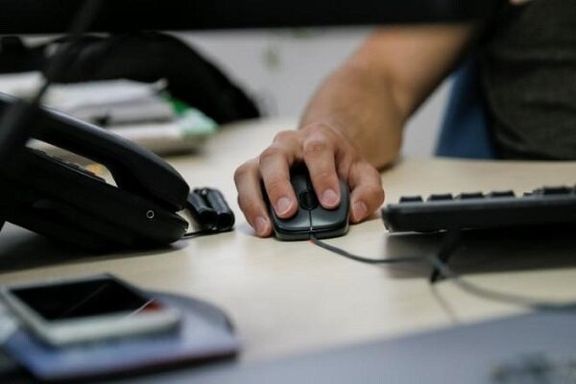
Frustrated over how to block the Internet that savvy Iranians would not circumvent, the Islamic Republic seems to be about shutting down access to the WWW.
The regime has given a 10-day deadline to the American company Meta Platforms, the owner of WhatsApp Messenger and Instagram, to establish offices in the country if they want its applications unblocked. The purpose of this move is to have control over its activities, a demand snubbed by the company.
Facebook, YouTube and Twitter are also blocked. Instagram is the only major international platform still accessible, which Iranians use extensively to conduct ecommerce. This is one major impediment to parliament’s plan for shutting down all foreign social media networks.
The demand had already seemed unreal, but many believe that the regime wanted to have an excuse to block the media platforms for good as it seems unable to stop the flow of information about the protests both within the country and to the outside world.
"If Meta does not respond to our letter, this could be the prologue to a permanent block," National Cyber Centre chief Abolhassan Firouzabadi said in a newspaper interview on Saturday.
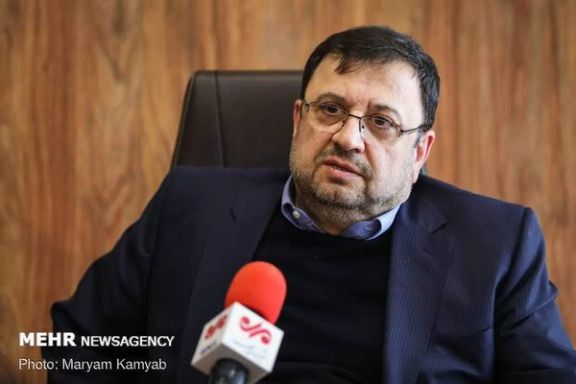
In remarks that were denied later, Interior Minister Ahmad Vahidi had threatened to permanently block WhatsApp and Instagram.
The Islamic Republic moved a couple of time to cut access to world Internet and replace it with an intranet which can be controlled by its intelligence services but one of the hurdles has always been the country’s banking network, which operates through the Internet. But on Sunday, Iran’s Interbank Information Transfer Network electronic banking system ordered all its subsidiaries to change their domains from .com extensions to .ir, which is dedicated to Iranian domains.
Many experts have expressed concerns about the move. Mohammad Mahdi Shariatmadar, the Chairman of the Board of Directors of the FinTech Association, called the "sudden" decision worrisome, saying that "I don't think new or even old payment partners will be able to continue operating with this method."
Milad Jahandar, the CEO of one of the online payment companies, said that the right to choose a domain is an obvious right of any company, noting that such a level of restriction in which the regulator even determines a domain name is unprecedented in the world.
Since January, Iran’s hardliner parliament has been discussing ways to intensify Internet censorship by establishing an intranet that would essentially ban foreign social media networks which allow Iranians to receive uncensored information and communicate with others.
The government has blocked thousands of websites in Iran for nearly 20 years both for ideological and political reasons. Almost all news and political websites not controlled by the government are inaccessible except by special software people need to use to get around the filtering.
Since the current round of protests began across the country in mid-September, a bipartisan group of US lawmakers are working with the US Treasury Secretary Janet Yellen to give Elon Musk’s satellite Internet service Starlink clearance to operate in Iran. The SpaceX CEO is trying to connect its internet services to users across Iran, a move that would be seen as the end of the Islamic Republic internet restriction policies.
In October, the US Department of State released a statement condemning Iran’s restrictions on access during nationwide protests over the death of Mahsa Amini.
“The United States is pleased to join the Freedom Online Coalition’s consensus Joint Statement on Internet Shutdowns in Iran,” reads the statement.
The Freedom Online Coalition is made up of 34 governments that collaborate to advance internet freedom worldwide.
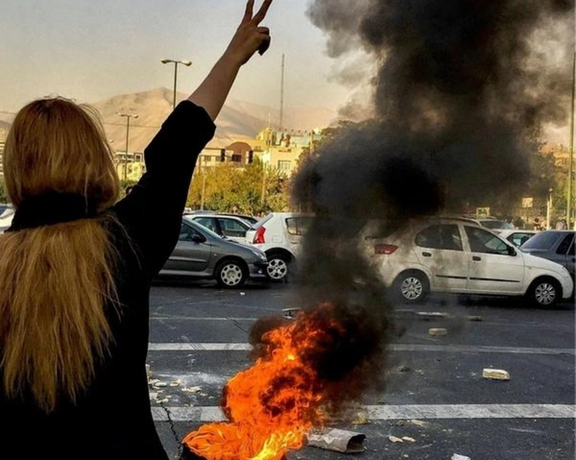
The landscape of Iran protests after three months is highlighted by condemnations of the government crackdown as more dissidents are jailed and in danger of execution.
Antigovernment protests continued overnight on Saturday in several cities with reports of security forces kidnapping at least two young women from their homes in Tehran’s neighborhood of Ekbatan.
A large disturbance also broke out in the Central Prison of Karaj, where some of the arrested protesters were being held. According to state media, at least one prisoner was killed during the unrest. Apparently, a fire and tumult broke out when prisoners blocked the entrance of a ward and chanted slogans against the regime and its ruler Ali Khamenei following the transfer of an inmate on death row to solitary confinement.
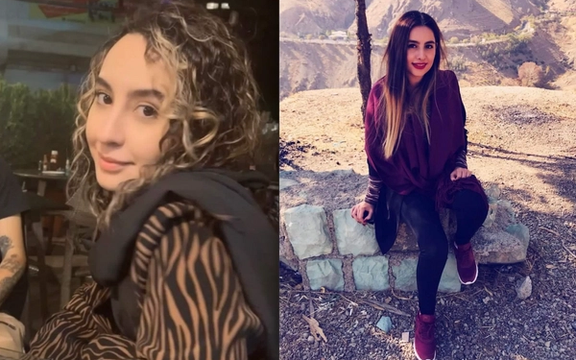
In addition to daily protests on streets and sit-ins at universities, strikes continued among employees of many industries, particularly in oil, gas and petrochemical sectors. On Sunday, firefighters in the northeastern city of Tabriz held a demonstration outside the city council building, protesting their low salaries and work conditions. Setting fire to trash cans and government buildings, especially those of the seminaries and bases of Basij paramilitary forces, has become a regular method of protests during the past three months.
Grassroot groups and activists have also announced calls for another three-day nationwide protests and strikes starting Monday, for December 19, 20, and 21.
The voices of condemnation by some Iranian religious and political figures, even regime insiders are increasing against the regime’s human rights violations aimed at quashing the ongoing protests that show no sign of ending.
In a statement on Sunday, hundreds of intellectuals and cultural figures as well as activists strongly condemned the executions of protesters describing them “systematic murders by the regime.” Famous writers, sociologists, and university professors are among the signatories, and their number is still growing.
The signatories said the Islamic Republic has executed two protesters since the beginning of the “Woman, Freedom, Life Movement” in mid-September, while its strategy of intimidation and executions has not managed to ensure its legitimacy and is on the brink of collapse.
The regime has so far executed Mohsen Shekari and Majidreza Rahnavard, both 23, and based on the latest report by Iran Human Rights Organization, 39 other people are at risk of execution on charges of “war against God” and “corruption on earth.” The Oslo-based group also added that at least 469 people, including 63 children and 32 women, have been killed by security forces in the current nationwide protests in Iran.
It also noted that there is serious concern about the imminent execution of six protesters after one detainee with a confirmed death sentence was transferred from the general ward of Rajai Shahr Prison in Karaj to solitary confinement and at least five protesters detained in the western city of Oshnavieh charged with ‘moharebeh’ were transferred from Urmia Central Prison to an unknown location. Moharebeh is an Islamic-Arabic term that in the lexicon of the Iranian regime means “fighting God” and its punishment is death.

Hundreds of Iranian literary and cultural figures as well as activists have strongly condemned the execution of protesters calling it “murders organized by the regime.”
Nearly four hundred intellectuals and activists inside and outside Iran, in a statement warned about the suppression of protests saying the government is killing protesters in an organized manner.
The signatories have pointed out that nearly three months after the beginning of the “Woman, Freedom, Life Movement” and the execution of two protestors, the government is facing “lack of legitimacy” and it has resorted to intimidation and executions, “but it will soon see the collapse of its foundations.”
The Islamic Republic has so far executed Mohsen Shekari and Majidreza Rahnavard, both 23, and based on the latest report by the Oslo-based Iran Human Rights Organization, 39 other people are at risk of execution on charges of “war against God” and “corruption on earth.”
"The only real epitome of ‘fighting against God’ and depriving people of security and peace are the same rulers who send their mercenaries to the streets with guns to beat and kill and intimidate,” reads the statement.
“We, the signatories of this statement, have declared our opposition to executions and the systematic state murders, and together with the freedom-loving and egalitarian people of Iran, demand an end to this process as soon as possible,” adds the statement.
The names of famous figures including writers, sociologists, and university professors can be seen in the list, and the number of signatures continues to increase.
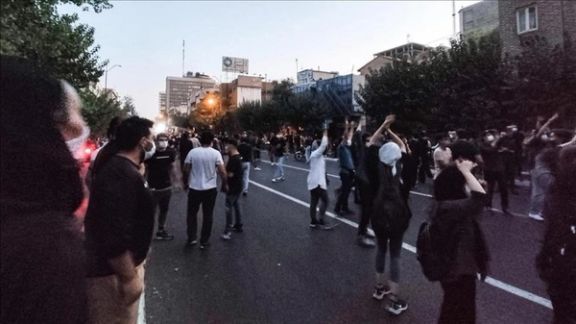
A human rights network has warned that at least 39 protesters are currently at risk of execution or death penalty sentences in Iran.
Iran Human Rights Organization says as most families are under pressure to stay quiet, this figure is a minimum and the real number is believed to be much higher.
The Oslo-based group also added that at least 469 people including 63 children and 32 women, have been killed by security forces in the current nationwide protests in Iran.
Iran Human Rights Organization in its latest report said the higher death toll relates to recently verified cases from the first two months of the protests.
Protesters have been killed in 25 provinces, with the most reported in Sistan-Baluchistan, Western Azerbaijan, Kordestan, Tehran and Mazandaran respectively, noted the organization.
It also noted that there is serious concern about the imminent execution of six protesters after one detainee with a confirmed death sentence was transferred from the general ward of Rajai Shahr Prison in Karaj, west of Tehran, to solitary confinement and at least five protesters detained in the western city of Oshnavieh charged with ‘moharebeh’ were transferred from Urmia Central Prison to an unknown location.
Moharebeh is an Islamic-Arabic term that in the lexicon of the Iranian regime means “fighting God” and its punishment is death.
Iran has been the scene of nationwide anti-regime protests after the death of Mahsa Amini in police custody in mid-September.